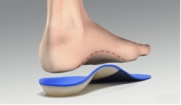Plantar Fasciitis Braces in Mui Wo Kau Tsuen HKSAR
Podiatrists for Plantar Fasciitis Treatment in Mui Wo Kau Tsuen HKSAR, China

Handling Achilles Tendon Injuries Achilles tendon discomfort is a typical running injury that influences the lower calf/heel area. Usage practical sports training methods, such as wearing the right shoes and extending before activities. Essentially all of the force produced when you toe off" the ground during running is transferred by the Achilles, and this force can be as much as three times your body weight. My conditioning was back on track and I started playing complete field soccer again without any heel pain. Ice: Use an ice pack covered in a towel or a cold compress to your tendon for 15 minutes or more after you work out or if you feel discomfort in the tendon. The Achilles tendon is the thickest and strongest tendon in your body, connecting your calf muscles to the back of your heel. The tendon will be very tender on palpation or pressing in on the achilles tendon or squeezing it from the sides. Normally, the closer a shoe is to feeling and looking like a running shoe," the much better it is for your foot. The night splint absolutely helped, but exactly what finally got me back on the streets was ART treatment. Being out of shape or not warming up before exercising might also trigger Achilles tendon issues. Try a pair of prescription orthotic inserts for your shoes if your medical professional believes it will assist. Achilles tendonitis normally starts off as a dull tightness in the tendon, which gradually goes away as the location gets warmed up. It may worsen with faster running, uphill running, or when using spikes and other low-heeled running shoes. After about four or five weeks the outcomes became obvious that I was moving with a good deal less discomfort in my heel.
Heel Pain Doctors and Surgery in Hong Kong
Previous Plantar Fasciitis Brace Next Plantar Fasciitis Brace Supplier
Plantar Fasciitis Braces Around Hong Kong
Plantar Fasciitis Braces in Man Kok HKSAR
Plantar Fasciitis Braces in Fan Leng Lau HKSAR
Plantar Fasciitis Braces in Mau Ping San Uk HKSAR
Plantar Fasciitis Braces in Lai Tau Shek HKSAR
Plantar Fasciitis Braces in Fui Sha Wai HKSAR
Plantar Fasciitis Braces in Ma Wo HKSAR